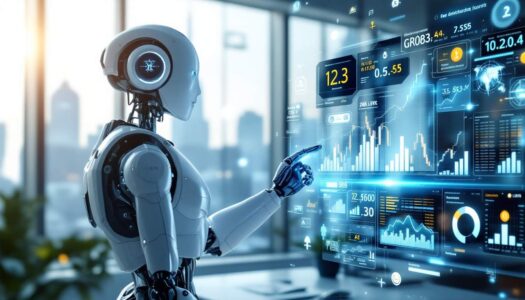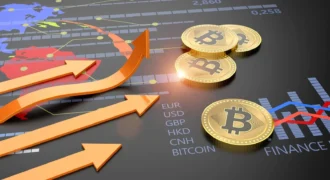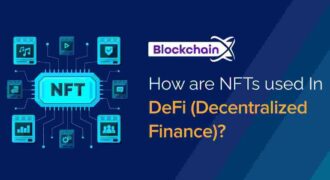The cryptocurrency market has always been a playground for volatility — unpredictable, fast-moving, and filled with both risk and reward. For years, traders have relied on instinct, experience, and charts to make their moves. But now, a new force is changing the game entirely: Artificial Intelligence (AI).
From automated trading bots to predictive analytics and sentiment-driven algorithms, AI is rewriting the rules of crypto trading. It’s not just helping traders make faster decisions — it’s helping them make smarter ones.
So how exactly is AI transforming the crypto market, and what does the future of trading look like in a world where machines analyze, learn, and execute at lightning speed? Let’s break it down.
The Rise of AI in Finance and Crypto
Artificial Intelligence has already made its mark in traditional finance — powering hedge funds, high-frequency trading systems, and risk management models. But the crypto market, with its round-the-clock activity and massive data flow, presents the perfect environment for AI to thrive.
Unlike traditional assets, cryptocurrencies operate without centralized control. Their prices are influenced by a combination of social sentiment, on-chain data, and technical patterns, all of which shift rapidly. AI’s ability to process and interpret massive datasets in real time gives it a crucial edge.
Today, AI is being used across exchanges, trading platforms, and blockchain analytics firms to detect market signals, predict price movements, and automate complex trading strategies — tasks that would be nearly impossible for humans to perform at scale.
How AI Is Transforming Crypto Trading
Let’s look at the key areas where AI is making a powerful impact.
1. Predictive Analytics: Seeing the Future in the Data
AI thrives on pattern recognition. By feeding it years of historical trading data, developers train models to identify trends, correlations, and signals that often go unnoticed by human traders.
Using machine learning and deep neural networks, these systems can forecast short-term price fluctuations or detect when a coin is likely to break resistance or support levels.
Some algorithms even incorporate sentiment analysis — scraping data from social media, news headlines, and on-chain activity to predict how public emotion could affect market behavior.
For instance, a sudden spike in negative Twitter mentions about Bitcoin might trigger a bot to sell positions before prices drop, protecting traders from losses.
2. Automated Trading Bots
Perhaps the most visible use of AI in crypto is through trading bots — autonomous software that buys and sells based on pre-defined or adaptive strategies.
Unlike older bots that followed rigid rule sets, AI-powered bots learn and adapt. They analyze real-time market conditions, optimize entry and exit points, and even modify their risk tolerance as conditions evolve.
Platforms like Bitget, 3Commas, and Pionex are integrating AI-driven features that allow users to automate trades across multiple exchanges with precision. These bots can:
- Execute trades in milliseconds.
- Scan multiple assets simultaneously.
- Adjust strategies using reinforcement learning.
- Eliminate emotional bias — one of the biggest challenges in human trading.
In short, AI bots don’t sleep, panic, or get greedy — they just execute.
3. Risk Management and Portfolio Optimization
AI’s analytical strength goes beyond execution — it’s helping traders manage risk intelligently.
By constantly monitoring volatility, liquidity, and historical correlation between assets, AI models can rebalance portfolios automatically to minimize exposure and maximize returns.
For example:
- When Bitcoin dominance increases, AI may shift portfolio weight away from smaller altcoins to reduce risk.
- During a bearish trend, algorithms might hedge positions with stablecoins or short positions.
AI can even simulate multiple “what if” scenarios to stress-test trading strategies — a level of sophistication that human traders simply can’t match.
4. Fraud Detection and Security
The crypto space is notorious for scams, phishing, and manipulation schemes. AI helps safeguard traders by identifying suspicious activities across wallets and exchanges.
Machine learning models can flag unusual transaction patterns, identify pump-and-dump behaviors, and even detect anomalous trading spikes that may signal market manipulation.
This makes AI not just a trading tool, but also a guardian of transparency and security in the blockchain ecosystem.
5. Sentiment and News-Based Trading
Crypto markets are heavily influenced by news events and community sentiment. A single Elon Musk tweet can send coins soaring or crashing.
AI tools use natural language processing (NLP) to analyze text, social media posts, and even videos in real time. By quantifying emotion — optimism, fear, excitement — these systems generate actionable insights for traders.
In essence, AI transforms raw human emotion into structured trading signals, helping traders stay one step ahead of hype cycles.
The Benefits: Why Traders Are Embracing AI
- Speed & Efficiency:
AI analyzes thousands of data points per second — faster than any human team could dream of. - Emotion-Free Decisions:
Fear and greed often lead to poor trades. AI eliminates that, following logic and probability instead. - 24/7 Trading Power:
Crypto markets never close. AI bots operate continuously, capturing opportunities even while traders sleep. - Accessibility:
You don’t need to be a data scientist to use AI tools anymore. Platforms now offer plug-and-play automation, letting retail traders access institutional-grade technology. - Consistency:
AI ensures discipline — executing strategies exactly as designed, without deviation or hesitation.
The Risks: Not All AI Is Foolproof
Despite its promise, AI in crypto trading comes with significant caveats.
1. Overfitting and Model Error
If an AI model is trained too specifically on historical data, it might perform poorly when faced with new market conditions — a problem known as overfitting. Crypto’s unpredictable nature makes this a serious concern.
2. Technical Failures
A bot that malfunctions due to poor coding, latency issues, or API errors can trigger costly trades. Even a small glitch can lead to substantial financial loss in volatile markets.
3. Market Manipulation Risks
When many traders rely on similar AI strategies, the market can become self-referential, amplifying volatility rather than reducing it.
4. Cost and Complexity
Premium AI tools or data subscriptions can be expensive. For inexperienced traders, the cost may outweigh the returns if not used properly.
5. Lack of Regulation
There’s no global framework governing AI-driven trading in crypto. If a bot behaves unfairly or gets exploited, legal recourse is often unclear.
Africa’s Growing AI-Crypto Connection
Across Africa, the combination of AI and crypto trading is starting to open new doors for financial empowerment.
Young traders in Nigeria, Kenya, and South Africa are increasingly turning to AI-powered trading platforms to navigate volatile markets more effectively.
Moreover, AI can assist in education, risk management, and accessibility — allowing users with limited financial background to participate confidently in global crypto markets.
As infrastructure improves, Africa could become a leader in responsible AI-driven crypto adoption, leveraging technology not just for profit, but for inclusion.
The Future: Autonomous Finance
We are heading toward a world of Autonomous Finance (AutoFi) — where smart systems handle everything from trading to portfolio rebalancing, and from yield farming to risk assessment.
In the near future:
- AI could create self-optimizing DeFi protocols that evolve in real time.
- AI-managed hedge funds may outperform traditional ones with minimal human oversight.
- Personalized AI advisors might offer tailored crypto investment plans to millions of users worldwide.
This revolution won’t replace human traders — it will enhance them, allowing humans and machines to work symbiotically. The most successful traders won’t be those who resist AI, but those who learn to harness it.
Final Thoughts
Artificial Intelligence isn’t just a tool — it’s becoming the driving intelligence of modern crypto trading. It brings order to chaos, logic to emotion, and automation to an unpredictable market.
But just like any powerful technology, AI requires understanding and responsibility. It can amplify profits — or magnify mistakes.
The future of crypto trading will belong to those who know how to balance both — the insight of the human mind and the precision of machine intelligence.
As AI continues to evolve, one thing is certain: the traders of tomorrow won’t just analyze the market — they’ll train their own algorithms to think for them.










